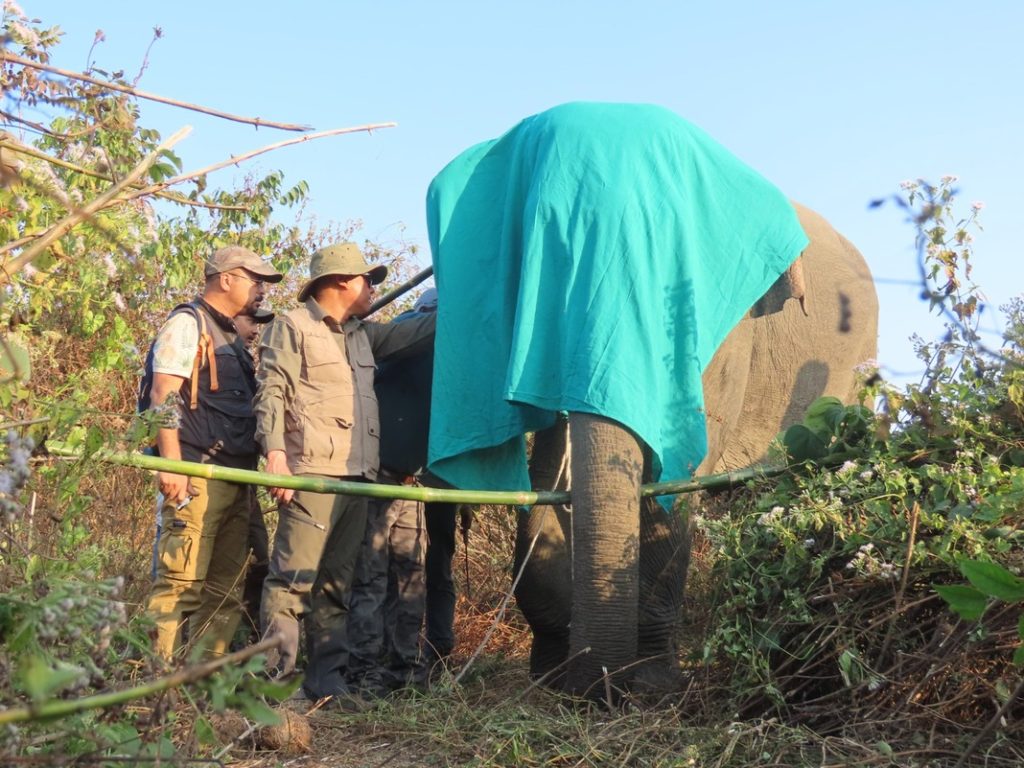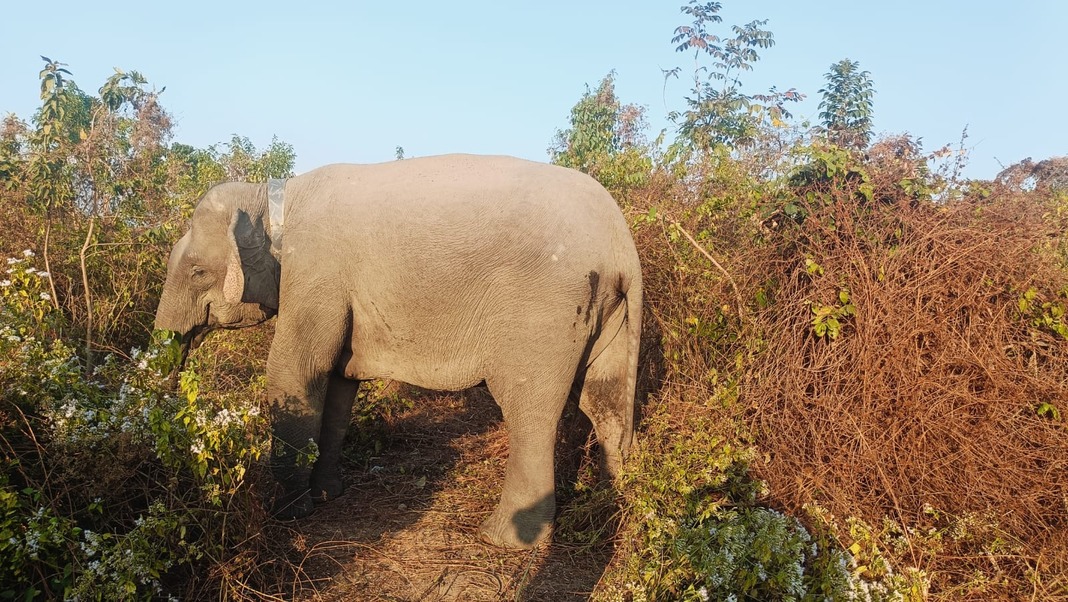Guwahati, Jan 7: In a significant step towards understanding and conserving Assam’s wild elephants, a 30-year-old female elephant was successfully radio-collared in the Daranga Reserve Forest under the Kumarikata Range of Baksa Forest Division in Assam.
Nestled at the foothills of the Bhutan Himalayas, this region falls under the jurisdiction of the Bodoland Territorial Council (BTC). The operation, executed on January 6, was a collaborative effort between the Assam Forest Department and Aaranyak, a leading biodiversity conservation organization.
This is the second successful radio-collaring operation conducted in the Baksa Forest Division. The first, carried out on November 18, 2024, involved a tusker and set the stage for subsequent efforts to monitor and conserve wild elephants in the region.

The radio-collaring operation was led by Dr C. Ramesh, Field Director of Manas Tiger Reserve, and supervised by Baksa’s Divisional Forest Officer (DFO), Pradip Bhuyan. With support from the district administration and police of Tamulpur district, a team of veterinarians, forest officials, biologists, and technical experts ensured the mission’s success.
The elephant was tranquillized by an expert team comprising veterinarians Dr Prabhat Basumatary, Dr Bhaskar Choudhary, and Dr Debabrata Phukan, along with elephant expert Kaushik Barua and technical expert Priyo Kanta Borbora from Assam State Zoo. Aaranyak’s biologists, including Abhijit Boruah and Anushka Saikia, were joined by team members Dibakar Nayak, Dipankar Haloi, Rangjalu Basumatary, Didom Basumatary, and Rupam Goyari, with logistical coordination spearheaded by Hiten Kumar Baishya, Deputy Head of Aaranyak’s Elephant Conservation and Research Division (ERCD).
The operation was made possible through support from the SBI Foundation and Prof. Curtis Griffin of the University of Massachusetts, USA. Aaranyak played a crucial role in facilitating the process, while the Baksa Forest Division and proactive assistance from Tamulpur’s civil and police administrations ensured smooth execution.

The GPS-based satellite radio telemetry used in this project is designed to track the elephant’s movements, habitat preferences, and range behaviour “The location data will contribute to the long-term management of human-elephant conflict in the landscape,” explained Hiten Baishya of Aaranyak.
Dr. Bibhuti Prasad Lahkar, Head of Aaranyak’s ERCD, added, “The primary objective is to determine elephant occupancy within an area or range, which will enhance our ability to manage human-elephant conflict and facilitate conservation.”
Daranga Reserve Forest is part of the Manas Landscape, a critical habitat for elephants and other wildlife. However, the region also faces challenges, including human-elephant conflict, driven by habitat fragmentation and increasing pressure on natural resources. By tracking elephant movements and behaviour, conservationists hope to identify critical linkages and mitigate conflict effectively.



